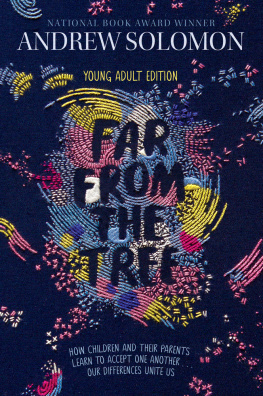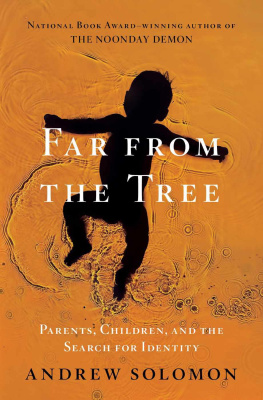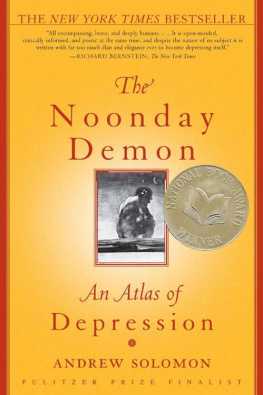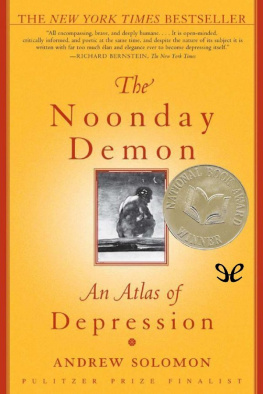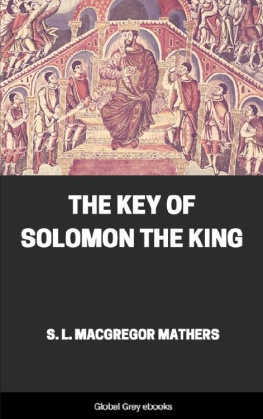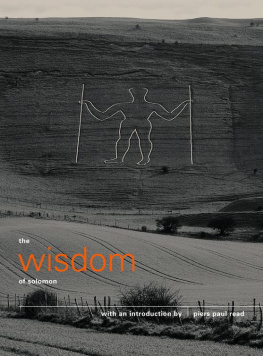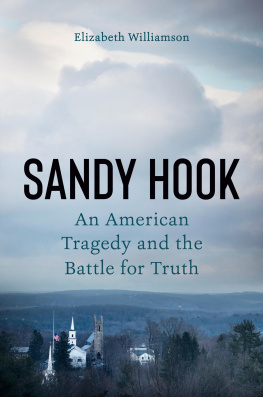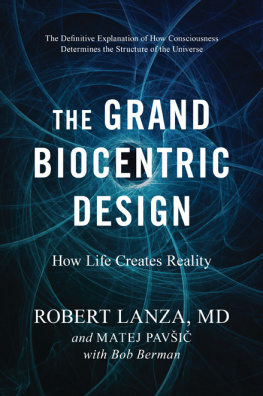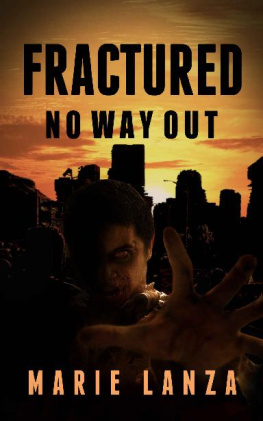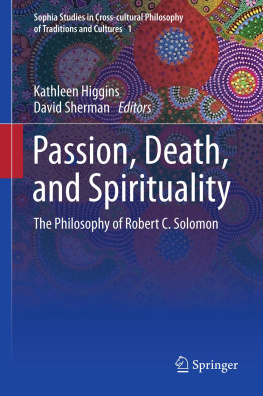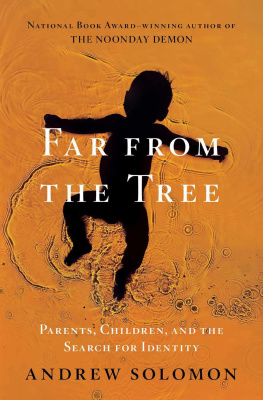Extraordinary media coverage for The Reckoning
WNYCs The Leonard Lopate Show
NPRs Fresh Air with Terry Gross
ABCs Katie
NBCs Today Show
NBC Evening News
CBS Evening News
CNN
BBC Newshour
WSHU
Salon
Praise for The Reckoning
Stunning... Emotionally wrenching.
The New York Times
Solomon tells, for the first time, the story of Peter Lanza, the father of Adam Lanza, the Sandy Hook Elementary shooter. Read itits moving, brave, and just profoundly human and sad.... There arent any answers. And thats what makes this all so impossible, and Solomons journalism so essential.
Salon.com
Powerful and affecting.
The New Yorker
Both parents loved Adam. Neither parent imagined or wanted their childs horrific end. This is why what Peter Lanza did by sharing his story with Andrew Solomon is so important. Lanzas story fills important gaps in our understanding of how a beloved child became a killerand reminds us as a society that we have an obligation to help families and children before they find themselves on irreversible paths of violence.
Time
By talking to Lanza, [Solomon] brings some light and empathy to a difficult topic, about which we are still reckoning with the reverberations and aftermath.
Flavorwire
The lesson of Peter Lanza isnt simply that we never know what calamity awaits our families, so we dare not tempt fate with complacency.
The Baltimore Sun
Solomon... brings both compassion and clear-eyed reporting.
The Christian Science Monitor
A LSO BY A NDREW S OLOMON
Far from the Tree: Parents, Children, and the Search for Identity
The Noonday Demon: An Atlas of Depression
A Stone Boat
The Irony Tower: Soviet Artists in a Time of Glasnost

The Reckoning
I n Peter Lanzas new house, on a secluded private road in Fairfield County, Connecticut, is an attic room overflowing with shipping crates of what he calls the stuff. Since the day in December 2012 when his son Adam killed his own mother, himself, and twenty-six people at Sandy Hook Elementary School, strangers from across the world have sent thousands upon thousands of letters and other keepsakes: prayer shawls, Bibles, Teddy bears, homemade toys; stories with titles such as My First Christmas in Heaven; crosses, including one made by prison inmates. People sent candy, too, and when I visited Peter, last fall, he showed me a bag of year-old caramels. He had not wanted to throw away anything that people sent. But he said, I was wary about eating anything, and he didnt let Shelley Lanzahis second wifeeat any of the candy, either. There was no way to be sure it wasnt poisoned. Downstairs, in Peters home office, I spotted a box of family photographs. He used to display them, he told me, but now he couldnt look at Adam, and it seemed strange to put up photos of his older son, Ryan, without Adams. Im not dealing with it, he said. Later, he added, You cant mourn for the little boy he once was. You cant fool yourself.
Since the shootings, Peter has avoided the press, but in September, as the first anniversary of his sons rampage approached, he contacted me to say that he was ready to tell his story. We met six times, for interviews lasting as long as seven hours. Shelley, a librarian at the University of Connecticut, usually joined us and made soup or chili or salads for lunch. Sometimes we played with their German shepherd. When Peter speaks, you can still hear a strong trace of rural Massachusetts and southern New Hampshire, where he and his first wifeNancy, Adams mothergrew up. He is an affable man with a poise that often hides his despair. An accountant who is a vice president for taxes at a General Electric subsidiary, he maintains a nearly fanatical insistence on facts, and nothing annoyed him more in our conversations than speculationby me, the media, or anyone else. He is not by nature given to self-examination, and often it was Shelley who underlined the emotional ramifications of what he said.
Peter hadnt seen his son for two years at the time of the Sandy Hook killings, and, even with hindsight, he doesnt think that the catastrophe could have been predicted. But he constantly thinks about what he could have done differently and wishes he had pushed harder to see Adam. Any variation on what I did and how my relationship was had to be good, because no outcome could be worse, he said. Another time, he said, You cant get any more evil, and added, How much do I beat up on myself about the fact that hes my son? A lot.
Depending on whom you ask, there were twenty-six, twenty-seven, or twenty-eight victims in Newtown. Its twenty-six if you count only those who were murdered at Sandy Hook Elementary School; twenty-seven if you include Nancy Lanza; twenty-eight if you judge Adams suicide a loss. There are twenty-six stars on the local firehouse roof. On the anniversary of the shootings, President Obama referred to six dedicated school workers and twenty beautiful children who had been killed, and the governor of Connecticut asked churches to ring their bells twenty-six times. Some churches in Newtown had previously commemorated the victims by ringing twenty-eight times, but a popular narrative had taken hold in which Nancya gun enthusiast who had taught Adam to shootwas an accessory to the crime, rather than its victim. Emily Miller, an editor at the Washington Times, wrote, We cant blame lax gun-control laws, access to mental-health treatment, prescription drugs or video games for Lanzas terrible killing spree. We can point to a mother who should have been more aware of how sick her son had become and forced treatment.
Inadequate gun control and poor mental-health care are problems that invariably define the debate after atrocities such as the one at Newtown. But, important as those issues are, our impulse to grasp for reasons comes, arguably, from a more basic needto make sense of what seems senseless. When the Connecticut states attorney issued a report, in December, CNN announced, Sandy Hook killer Adam Lanza took motive to his grave. A New York Times headline ran CHILLING LOOK AT NEWTOWN KILLER, BUT NO WHY. Yet no motive can mitigate the horror of a bloodbath involving children. Had we found outwhich we did notthat Adam had schizophrenia, or had been a pedophile or a victim of childhood abuse, we still wouldnt know why he acted as he did.
Interview subjects usually have a story they want to tell, but Peter Lanza came to these conversations as much to ask questions as to answer them. Its strange to live in a state of sustained incomprehension about what has become the most important fact about you. I want people to be afraid of the fact that this could happen to them, he said. It took six months after the shootings for a sense of reality to settle on Peter. But its real, he said. It doesnt have to be understood to be real.
* * *
Adam Lanza was never typical. Born in 1992, he didnt speak until he was three, and he always understood many more words than he could muster. He showed such hypersensitivity to physical touch that tags had to be removed from his clothing. In preschool and at Sandy Hook, where he was a pupil till the beginning of sixth grade, he sometimes smelled things that werent there and washed his hands excessively. A doctor diagnosed sensory-integration disorder, and Adam underwent speech therapy and occupational therapy in kindergarten and first grade. Teachers were told to watch for seizures.
Still, photos show him looking cheerful. Adam loved Sandy Hook school, Peter said. He stated, as he was growing older, how much he had liked being a little kid. Adams brother, Ryan, four years older and now a tax accountant in New York, used to joke about how close Peter and Adam were. Theyd spend hours playing at two Lego tables in the basement, making up stories for the little towns they built. Adam even invented his own board games. Always thinking differently, Peter said. Just a normal little weird kid.
Next page
